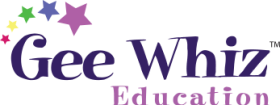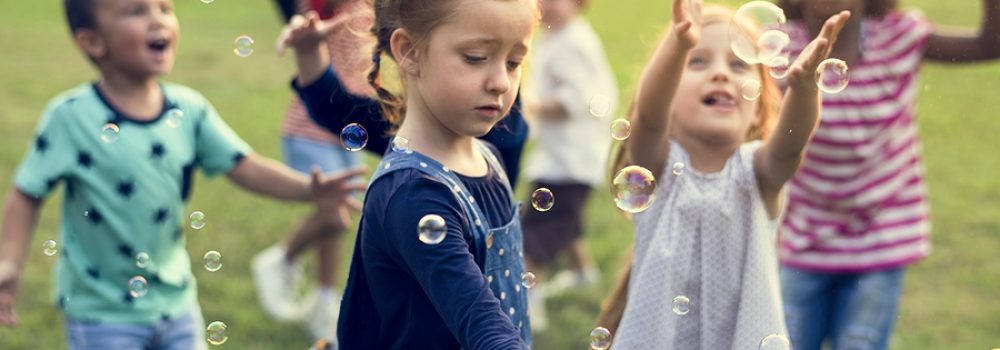What is Guided Play?
Ms. Terri, a family child care provider, is blowing bubbles for the children to chase. She knows that as the children chase the bubbles, they will develop gross motor skills, eye-hand coordination and problem-solving skills. She also knows that she can scaffold the experience to weave in even more learning goals through a process called guided play. So, how does she do that?
Ms. Terri can ask open-ended questions and interweave new skills and concepts as she engages with the children. For instance, Ms. Terri might say something like: “The bubbles are moving very fast because today is a windy day. I wonder what might happen to the bubbles if there was not any wind. What do you think?” This type of statement not only opens the door to discussions about weather (wind), it also opens the door for the children to make predictions. As the children suggest their ideas, they might decide that on a day without wind, they want to test their ideas to see if they are correct. They might also suggest moving to an area that is not as windy to see what happens. Using guided play, Ms. Terri has now used light scaffolding to help the children take a simple experience of chasing bubbles in a totally new direction.
Ms. Terri could also interweave math into the experience by talking about the shape, size or number of bubbles as the children play. For instance, she might say something like, “Did you know that bubbles are spheres and not circles? Can you think of anything else that is shaped like a sphere?” This might also lead to opening the door for a bubble experimentation station where children can try to make bubbles that are not spheres. Do they think this is possible? What materials would they need to try their ideas? Where could they find those materials? By using guided play to weave the concept of a sphere into the experience, Ms. Terri is exposing the children to new ideas in a meaningful way and encouraging them to take their ideas in new directions.
Guided play is exactly what it sounds like … guided. It is not “directed” play where you are calling the shots. Instead, when you engage with children using guided play, you are not taking over their play but instead enhancing discovery. There is a great deal of research coming out that supports the idea that this approach helps children build knowledge in a way that is meaningful.
So, the next time the children are playing, be sure to utilize guided play. It is a very powerful approach that enables you to increase the children’s knowledge in many areas in a meaningful way while also encouraging creative thinking.
At Gee Whiz, we build guided-play and open-ended questioning into all of our experiences. Be sure to check out our website and a sample lesson plan.




